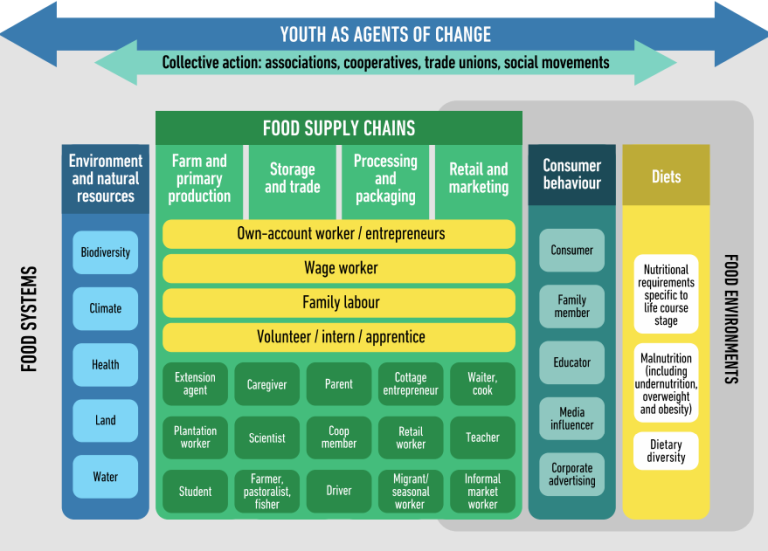Youth can contribute to the global transformation of food systems in various roles, both as individuals and as participants in collective actions, according to the High Level Panel of Experts on Food Security and Nutrition (HLPE)

Source: HLPE
A diagram crafted by HLPE illustrates the roles and spaces for youth engagement and employment in food systems. The chart recognizes the complexity of relationships among the systems that support food production, food supply chains, food environments, the behavior of individual consumers, diets, and the broader outcomes that feed back into the system.

The food system comprises diverse actors with functions that span the management of natural resources, primary agricultural production, trade, processing, retail marketing, consumption, food literacy, nutrition education, and waste disposal. It also incorporates consumer behavior, influencing diets and dietary outcomes.
Youth serve as agents of change across all dimensions of food systems, engaging in various overlapping roles and modalities. These include (1) being a source of jobs and livelihoods in food and agricultural supply chains, (2) participating in jobs related to transport, warehousing, informal trading, and serving as middle-persons in storage and distribution, (3) taking up temporary and seasonal work in food processing and packaging, a domain commonly occupied by adolescents, particularly young women, and (4) contributing to retail and marketing spaces.
Reference:
High Level Panel of Experts on Food Security and Nutrition. (2021). Promoting youth engagement and employment in agriculture and food systems. Retrieved August 29, 2023 from https://www.fao.org/3/cb5464en/cb5464en.pdf


